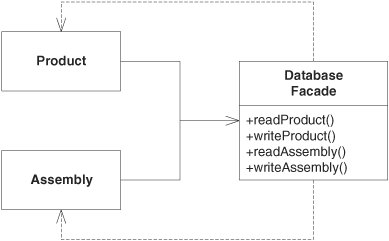Using Other Patterns with Databases
| Four other patterns that can be used with databases are EXTENSION OBJECT, VISITOR, DECORATOR, and FACADE.[2]
Figure 34-10. Database facade This coupling can cause problems in larger applications, but in smaller apps or in apps that are just starting to grow, it's a pretty effective technique. If you start using a facade and then later decide to change to one of the other patterns to reduce coupling, the facade is pretty easy to refactor. |
EAN: 2147483647
Pages: 272
